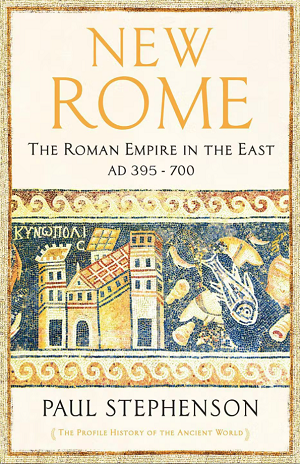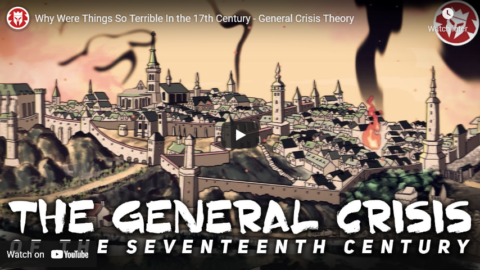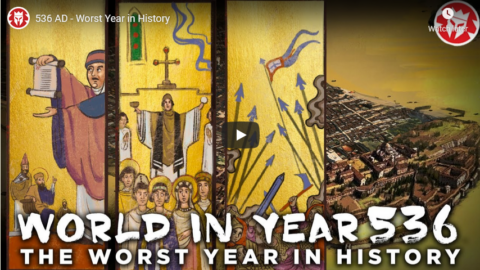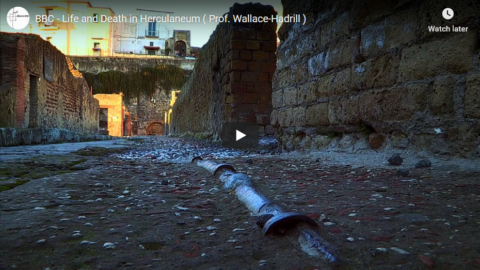Let me tell you about endangered species, all right? Saving endangered species is just one more arrogant attempt by humans to control nature. It’s arrogant meddling. It’s what got us in trouble in the first place. Doesn’t anybody understand that? Interfering with nature. Over 90%, way over 90% of all the species that have ever lived on this planet, ever lived, are gone. They’re extinct. We didn’t kill them all. They just disappeared. That’s what nature does.
We’re so self-important. So self-important. Everybody’s going to save something now. “Save the trees, save the bees, save the whales, save those snails.” And the greatest arrogance of all: save the planet. What? Are these fucking people kidding me? Save the planet, we don’t even know how to take care of ourselves yet. We haven’t learned how to care for one another, we’re gonna save the fucking planet?
I’m getting tired of that shit. Tired of that shit. I’m tired of fucking Earth Day, I’m tired of these self-righteous environmentalists, these white, bourgeois liberals who think the only thing wrong with this country is there aren’t enough bicycle paths. People trying to make the world safe for their Volvos. Besides, environmentalists don’t give a shit about the planet. They don’t care about the planet. Not in the abstract they don’t. You know what they’re interested in? A clean place to live. Their own habitat. They’re worried that some day in the future, they might be personally inconvenienced. Narrow, unenlightened self-interest doesn’t impress me.
Besides, there is nothing wrong with the planet. Nothing wrong with the planet. The planet is fine. The PEOPLE are fucked. Difference. Difference. The planet is fine. Compared to the people, the planet is doing great. Been here four and a half billion years. Did you ever think about the arithmetic? The planet has been here four and a half billion years. We’ve been here, what, a hundred thousand? Maybe two hundred thousand? And we’ve only been engaged in heavy industry for a little over two hundred years. Two hundred years versus four and a half billion. And we have the CONCEIT to think that somehow we’re a threat? That somehow we’re gonna put in jeopardy this beautiful little blue-green ball that’s just a-floatin’ around the sun?
The planet has been through a lot worse than us. Been through all kinds of things worse than us. Been through earthquakes, volcanoes, plate tectonics, continental drift, solar flares, sun spots, magnetic storms, the magnetic reversal of the poles … hundreds of thousands of years of bombardment by comets and asteroids and meteors, worlwide floods, tidal waves, worldwide fires, erosion, cosmic rays, recurring ice ages … And we think some plastic bags, and some aluminum cans are going to make a difference? The planet … the planet … the planet isn’t going anywhere. WE ARE!
We’re going away. Pack your shit, folks. We’re going away. And we won’t leave much of a trace, either. Thank God for that. Maybe a little styrofoam. Maybe. A little styrofoam. The planet’ll be here and we’ll be long gone. Just another failed mutation. Just another closed-end biological mistake. An evolutionary cul-de-sac. The planet’ll shake us off like a bad case of fleas. A surface nuisance.
You wanna know how the planet’s doing? Ask those people at Pompeii, who are frozen into position from volcanic ash, how the planet’s doing. You wanna know if the planet’s all right, ask those people in Mexico City or Armenia or a hundred other places buried under thousands of tons of earthquake rubble, if they feel like a threat to the planet this week. Or how about those people in Kilauea, Hawaii, who built their homes right next to an active volcano, and then wonder why they have lava in the living room.
The planet will be here for a long, long, LONG time after we’re gone, and it will heal itself, it will cleanse itself, ’cause that’s what it does. It’s a self-correcting system. The air and the water will recover, the earth will be renewed, and if it’s true that plastic is not degradable, well, the planet will simply incorporate plastic into a new pardigm: the earth plus plastic. The earth doesn’t share our prejudice towards plastic. Plastic came out of the earth. The earth probably sees plastic as just another one of its children. Could be the only reason the earth allowed us to be spawned from it in the first place. It wanted plastic for itself. Didn’t know how to make it. Needed us. Could be the answer to our age-old egocentric philosophical question, “Why are we here?” Plastic … asshole.
So, the plastic is here, our job is done, we can be phased out now. And I think that’s begun. Don’t you think that’s already started? I think, to be fair, the planet sees us as a mild threat. Something to be dealt with. And the planet can defend itself in an organized, collective way, the way a beehive or an ant colony can. A collective defense mechanism. The planet will think of something. What would you do if you were the planet? How would you defend yourself against this troublesome, pesky species? Let’s see … Viruses. Viruses might be good. They seem vulnerable to viruses. And, uh … viruses are tricky, always mutating and forming new strains whenever a vaccine is developed. Perhaps, this first virus could be one that compromises the immune system of these creatures. Perhaps a human immunodeficiency virus, making them vulnerable to all sorts of other diseases and infections that might come along. And maybe it could be spread sexually, making them a little reluctant to engage in the act of reproduction.
Well, that’s a poetic note. And it’s a start. And I can dream, can’t I? See I don’t worry about the little things: bees, trees, whales, snails. I think we’re part of a greater wisdom than we will ever understand. A higher order. Call it what you want. Know what I call it? The Big Electron. The Big Electron … whoooa. Whoooa. Whoooa. It doesn’t punish, it doesn’t reward, it doesn’t judge at all. It just is. And so are we. For a little while.
George Carlin, “The arrogance of mankind”.
April 22, 2022
QotD: George Carlin’s appropriate-for-Earth-Day monologue
March 11, 2022
New Rome by Paul Stephenson
In The Critic, Daisy Dunn reviews a new history of the Eastern Roman Empire (called the Byzantine Empire by later scholars) that sounds quite interesting:
[Paul] Stephenson, a prolific scholar of Byzantium, has a wonderfully sharp eye for data and detail. His book examines the journey by which the Roman Empire progressed from being ruled from several different cities in the fifth century, among them Alexandria, Antioch, Constantinople and Rome itself, to just Constantinople, home to Procopius, and the “New Rome” of the book’s title.
I sat down expecting a narrative history of the fall of Rome, but was pleasantly surprised to find a portrait of the changing empire populated by statistics and technical hypotheses of a kind one would usually encounter in a copy of the Economist. The first ten pages alone contain references to cosmogenic radionuclides, the Maunder Minimum and the Early Anthropocene. I confess I needed a dictionary.
It is hard to think of another historian who applies such a scientific approach to ancient history, except perhaps the Stanford professor Josiah Ober, who has applied political theory and modern economic modelling to information garnered from classical sources to equally eye-opening effect. The terminology is not off-putting because Stephenson proves able to weave it succinctly and fluidly into his account of how the Late Empire functioned.
Constantinople, formerly Byzantium, was the principal base of the emperors from Theodosius I (“The Great”) in the final quarter of the fourth century onwards. The city was beautified with a wide variety of art and architecture, including the famous Egyptian obelisk, the arrival of which in the late fourth century is seemingly as mysterious as the appearance of the monolith in 2001: A Space Odyssey.
[…]
Attempts to answer the time-old question of why Rome fell have been characterised in recent years by a new awareness of the role that factors including pollution and climate change played. Anyone who has shrugged at the suggestion that the weather had anything to do with the demise of such a mighty empire will, I think, come away from this book persuaded that climate change and natural disasters provide an important part of the answer. Far from being moralistic and attempting to apply the examples of the past as a warning, Stephenson lays down the evidence unemotionally, and lets it speak for itself.
The causes of change were not purely driven by human behaviour, though smelting and, even more so, heavy warfare in the era of invading Huns and Vandals, had a significant environmental impact. Pollen records reveal a dramatic decline in the growing of cereals in Greece by about 600AD and, from the seventh century, pollination was happening predominantly through nature rather than agriculture.
The root cause of this was the destruction of arable land following invasions and the decline in human settlements. Add to this diminishing sunlight — measurements of “deposited radionuclides” indicate a significant reduction of light between the midfourth and late seventh centuries — and we are looking at a radically different landscape in this period from that of the High Empire.
Natural disasters (or were they?) also played a part. The later fifth and early sixth centuries witnessed a number of major volcanic eruptions. Vesuvius, which famously buried Pompeii when it awoke from seven centuries of dormancy in 79AD, erupted in 472 and 512, bookending, as Stephenson notes, the overthrow of the last Roman emperor, Romulus Augustulus.
February 2, 2022
Places – Lost in Time: The Vesuvius Volcanic Railways
Ruairidh MacVeigh
Published 23 Oct 2021Hello, and welcome back to Places – Lost in Time, a series that looks back on the tale of places and locations that existed within living memory or photographic record, but are now lost to the pages of history.
In perhaps one of the most unlikely of places, among the world’s most popular funicular railways once existed on the slopes of Mount Vesuvius, arguably the most dangerous volcano in the world. However, despite the inherent risk of putting a major tourist attraction on its slopes, the Vesuvius funicular railway, and the corresponding mountain railway, were among the biggest visitor magnets in Italy during the late 1800s and early 1900s, but sadly the forces of nature wouldn’t allow this unusual feature to stay in situ for long.
All video content and images in this production have been provided with permission wherever possible. While I endeavour to ensure that all accreditations properly name the original creator, some of my sources do not list them as they are usually provided by other, unrelated YouTubers. Therefore, if I have mistakenly put the accreditation of “Unknown”, and you are aware of the original creator, please send me a personal message at my Gmail (this is more effective than comments as I am often unable to read all of them): rorymacveigh@gmail.com
The views and opinions expressed in this video are my personal appraisal and are not the views and opinions of any of these individuals or bodies who have kindly supplied me with footage and images.
If you enjoyed this video, why not leave a like, and consider subscribing for more great content coming soon.
Thanks again, everyone, and enjoy!
References:
– Thomas Cook Archive (and their respective references)
– Wikipedia (and its respective references)
September 27, 2021
Why Were Things So Terrible In the 17th Century – General Crisis Theory
Kings and Generals
Published 26 Sep 2021
Go to https://NordVPN.com/kingsandgenerals and use code
kingsandgeneralsto get a 2-year plan with a huge discount plus 4 additional months for free. Protect yourself online today!Kings and Generals animated historical documentary series on early modern history and economic history continue with a video on the general crisis theory, as we try to deduce why the 17th century events were so terrible and why so many wars, rebellions, and upheavals happened in this period
Support us on Patreon: http://www.patreon.com/KingsandGenerals or Paypal: http://paypal.me/kingsandgenerals. We are grateful to our patrons and sponsors, who made this video possible: https://docs.google.com/document/d/1o…
The video was made by EdStudio while the script was researched and written by Turgut Gambar. Narration by Officially Devin (https://www.youtube.com/user/OfficiallyDevin)
Merch store ► teespring.com/stores/kingsandgenerals
Podcast ► http://www.kingsandgenerals.net/podcast/
Twitter ► https://twitter.com/KingsGenerals
Instagram ► http://www.instagram.com/Kings_Generals
Production Music courtesy of Epidemic Sound: http://www.epidemicsound.com
#Documentary #EarlyModern #GeneralCrisis
August 9, 2021
1815 Eruption of Mount Tambora
The History Guy: History Deserves to Be Remembered
Published 6 May 2020In 1815, the volcano Mount Tambora on the island of Sumbawa in the Dutch East Indies erupted in the most explosive volcanic eruption in human history. The explosion affected the world’s climate, changing history in surprising ways. The History Guy recalls the forgotten history of the year without a summer.
This is original content based on research by The History Guy. Images in the Public Domain are carefully selected and provide illustration. As very few images of the actual event are available in the Public Domain, images of similar objects and events are used for illustration.
You can purchase the “offshore” bow tie worn in this episode at The Tie Bar:
https://www.thetiebar.com/?utm_campai…All events are portrayed in historical context and for educational purposes. No images or content are primarily intended to shock and disgust. Those who do not learn from history are doomed to repeat it. Non censuram.
Find The History Guy at:
Patreon: https://www.patreon.com/TheHistoryGuy
The History Guy: History Deserves to Be Remembered is the place to find short snippets of forgotten history from five to fifteen minutes long. If you like history too, this is the channel for you.
Awesome The History Guy merchandise is available at:
teespring.com/stores/the-history-guyScript by THG
#volcano #thehistoryguy #history
From the comments:
The History Guy: History Deserves to Be Remembered
11 months ago
A viewer complained that much of the footage of volcanoes were volcanoes dissimilar to Tambora. Notably, Tambora is a stratovolcano. Lava from stratovolcano eruptions tends to be very viscous and cools quickly, whereas much of the footage in the episode is from shield volcanos in Hawaii, which produce free-flowing lava. Please understand that I can only use media in the Public Domain. I did not mean to misinform the audience by using the available footage and photographs.
May 25, 2021
536 AD – Worst Year in History
Kings and Generals
Published 11 May 2021Start speaking a new language in 3 weeks with Babbel
Get 6 months FREE when you sign up for 6 months!
HERE: https://go.babbel.com/6plus6-youtube-…
Kings and Generals’ historical animated documentary series on the history of Ancient Civilizations continues with a video on the year 536 AD, which many historians consider the worst year in history, as plague, famine, volcanic eruption, and extreme weather patterns changed the fate of the millions, especially influencing Sassanid and Eastern Roman Empires.
Support us on Patreon: http://www.patreon.com/KingsandGenerals or Paypal: http://paypal.me/kingsandgenerals We are grateful to our patrons and sponsors, who made this video possible: https://docs.google.com/document/d/1o…
Art and animation: Haley Castel Branco
Narration: Officially Devin (https://www.youtube.com/user/OfficiallyDevin)
Script: Matt Hollis
Merch store ► teespring.com/stores/kingsandgenerals
Podcast ► Google Play: http://bit.ly/2QDF7y0 iTunes: https://apple.co/2QTuMNG
Twitter ► https://twitter.com/KingsGenerals
Instagram ► http://www.instagram.com/Kings_Generals
Production Music courtesy of EpidemicSound
#Documentary #WorstYearInHistory #536
July 27, 2019
Life and Death in Herculaneum (Prof. Wallace-Hadrill)
November 18, 2018
New research shows 536AD to have been the true annus horribilis
There have been bad years in human history. There have been worse days in human history. But according to a recent study summarized in Science magazine, the worst year in recorded history was 536AD:
Ask medieval historian Michael McCormick what year was the worst to be alive, and he’s got an answer: “536.” Not 1349, when the Black Death wiped out half of Europe. Not 1918, when the flu killed 50 million to 100 million people, mostly young adults. But 536. In Europe, “It was the beginning of one of the worst periods to be alive, if not the worst year,” says McCormick, a historian and archaeologist who chairs the Harvard University Initiative for the Science of the Human Past.
A mysterious fog plunged Europe, the Middle East, and parts of Asia into darkness, day and night — for 18 months. “For the sun gave forth its light without brightness, like the moon, during the whole year,” wrote Byzantine historian Procopius. Temperatures in the summer of 536 fell 1.5°C to 2.5°C, initiating the coldest decade in the past 2300 years. Snow fell that summer in China; crops failed; people starved. The Irish chronicles record “a failure of bread from the years 536–539.” Then, in 541, bubonic plague struck the Roman port of Pelusium, in Egypt. What came to be called the Plague of Justinian spread rapidly, wiping out one-third to one-half of the population of the eastern Roman Empire and hastening its collapse, McCormick says.
Historians have long known that the middle of the sixth century was a dark hour in what used to be called the Dark Ages, but the source of the mysterious clouds has long been a puzzle. Now, an ultraprecise analysis of ice from a Swiss glacier by a team led by McCormick and glaciologist Paul Mayewski at the Climate Change Institute of The University of Maine (UM) in Orono has fingered a culprit. At a workshop at Harvard this week, the team reported that a cataclysmic volcanic eruption in Iceland spewed ash across the Northern Hemisphere early in 536. Two other massive eruptions followed, in 540 and 547. The repeated blows, followed by plague, plunged Europe into economic stagnation that lasted until 640, when another signal in the ice — a spike in airborne lead — marks a resurgence of silver mining, as the team reports in Antiquity this week.
H/T to Blazing Cat Fur for the link.
May 16, 2018
Why Hawaii’s volcano is so UNUSUAL
Physics Girl
Published on 16 Mar 2017Hawaii is known for its volcanoes, but most volcanoes on earth exist along tectonic plate lines. Hawaii does not! What causes Hawaii to form, and how is it related to the mystery of a magnetic bar code across the Pacific Ocean? Host Dianna Cowern chatted with geologist Noah Randolph-Flagg from UC Berkeley while hiking on the island of Kauai.
April 15, 2010
Volcano eruptions, historically speaking
An interesting slideshow at New Scientist shows that the eruption of Eyjafjallajökull-Fimmvörduháls in Iceland barely even ranks as an eruption, compared to past geological events (not limited to volcanic action).
Incidentally, if you want to know how to pronounce Eyjafjallajökull, there’s a Wikimedia file here. To be honest, even after hearing it pronounced correctly, I can’t reproduce it . . .
July 31, 2009
Cue up the ominous music . . .
. . . ’cause it’s the return of Krakatoa:
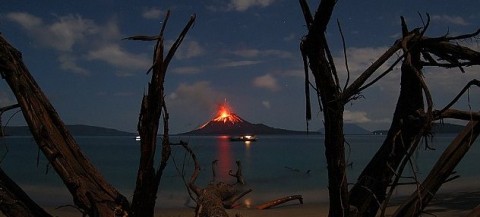 (Detail of image from the article)
(Detail of image from the article)
With an explosive force 13,000 times the power of the atomic bomb that annihilated Hiroshima, the 1883 eruption of Krakatoa killed more than 36,000 people and radically altered global weather and temperatures for years afterwards.
The eruption was so violent and catastrophic that no active volcano in modern times has come close to rivalling it, not even the spectacular eruption of Mount St Helens in the U.S. in 1980. Now, almost a century-and-a-half on, are we about to experience the horrors of Krakatoa once again?
‘Volcanic prediction is getting better,’ says Professor Jon Davidson, chair of Earth Science at Durham University and a volcanologist who has studied Krakatoa first-hand. ‘But we are never going to be able to fully predict big and unusual eruptions, precisely because they are unusual.’
Yet there is little doubt that if Krakatoa were to erupt again with such force and fury, the impact would be far more devastating than that which was experienced in the 19th century.
H/T to Nick Packwood.

